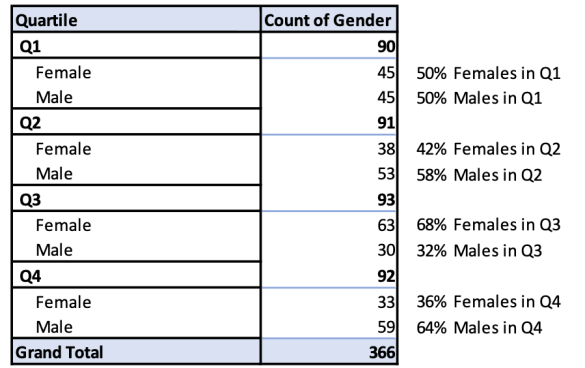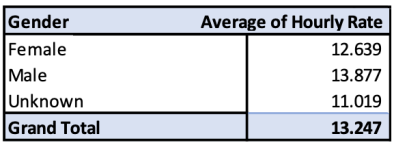The gender pay gap is the difference in the average hourly wage of men and women across a workforce. It compares the pay of all working men and women; not just those in similar jobs, with similar working pattern or with similar competencies, qualifications or experience.
Gender pay gap reporting is one part of a much-needed wider strategy to address female participation rates and employment gaps between genders. It will not on its own identify or solve the myriad of structural, cultural and policy causes for these differences, but it is a critical and welcome element. (Source: IBEC)
The Gender Pay Gap Information Act 2021 requires organisations to report on their hourly gender pay gap across a range of metrics. Regulations have been published which set out the detail on how these calculations should be made.
Under the 2021 Act the Irish organizations with 250+ employees are obligated to report:
(Source: KPMG Ireland)
The mean gender pay gap is the difference between women’s mean hourly wage and men’s mean hourly wage. The mean hourly wage is the average hourly wage across the entire organisation.
The median gender pay gap is the difference between women’s median hourly wage (the middle paid woman) and men’s median hourly wage (the middle paid man). The median hourly wage is calculated by ranking all employees from the highest paid to the lowest paid, and taking the hourly wage of the person in the middle.
Pay quartiles are calculated by splitting all employees in an organisation into four even groups according to their level of pay. Looking at the proportion of men and women in each quartile gives an indication of the gender representation at different levels of the organisation. (Source: KPMG Ireland)
Snapshot date: 24 June 2022
Number of employees: 370
Full Time: 81
Fixed Term: 12
Part time/Casual: 277

Whereas our overall workforce consists of almost equal representations of genders, and that is most evident at the entry level. We see that representation of women in 3rd Quartile is almost 2:1. This quartile is mainly where we can find supervisory and lower management positions. This provides a great talent pool and opportunity for growth of female supervisors to management and executive levels.
